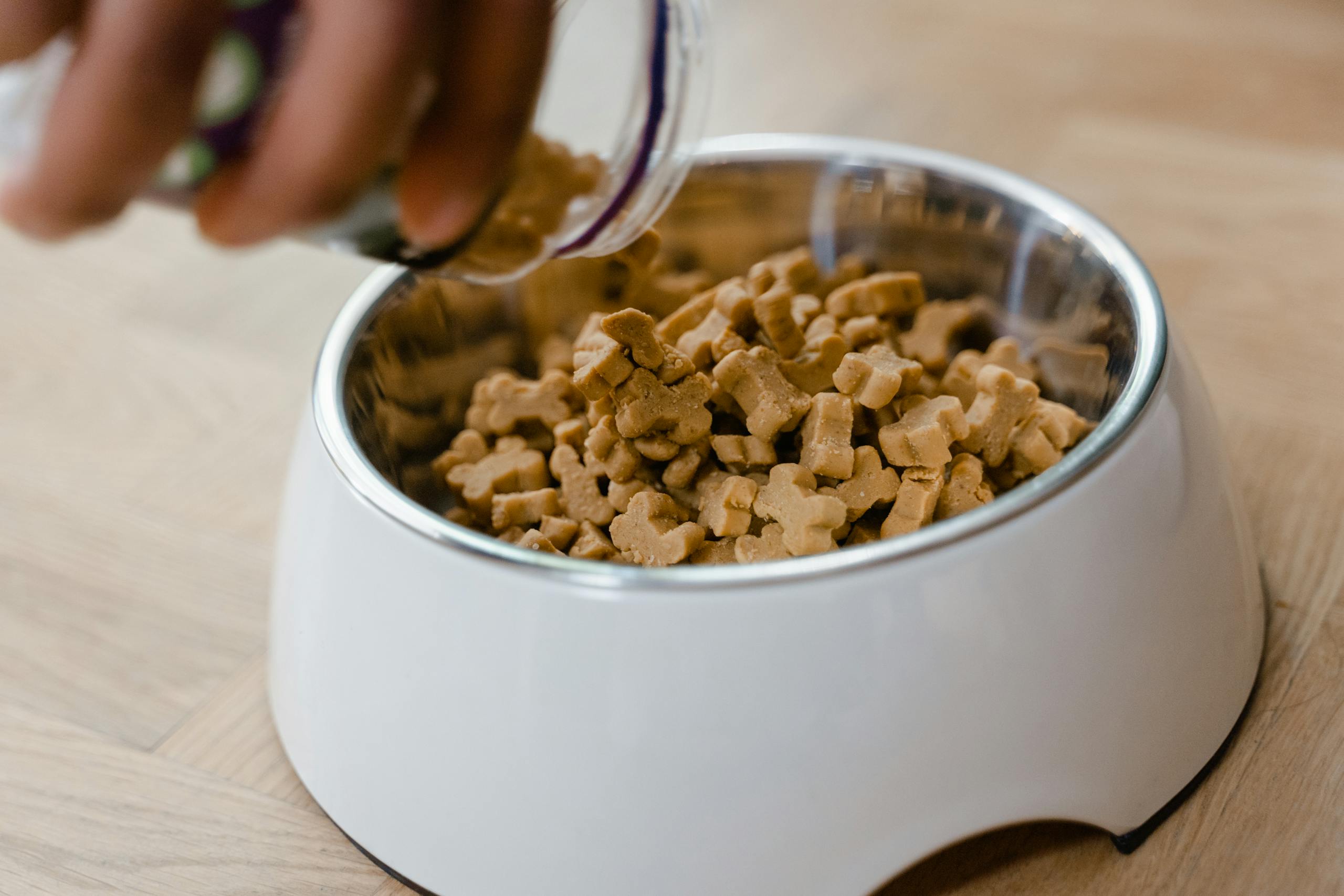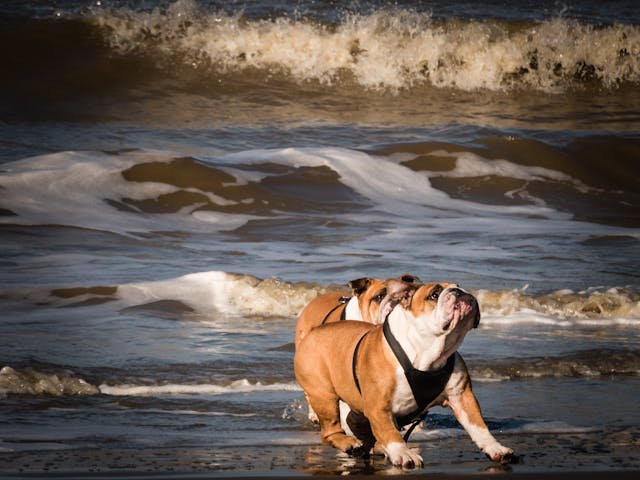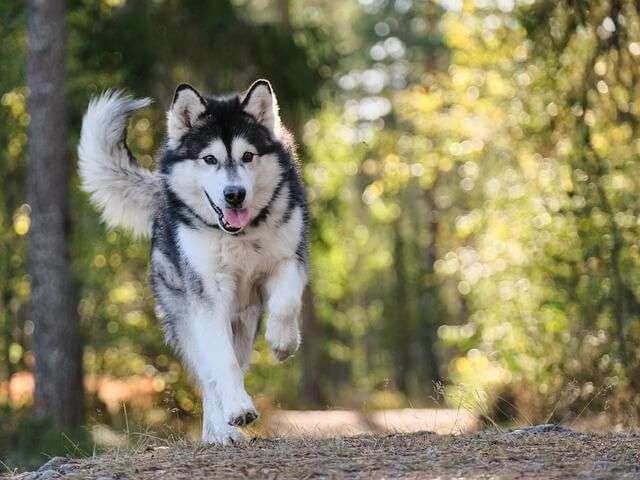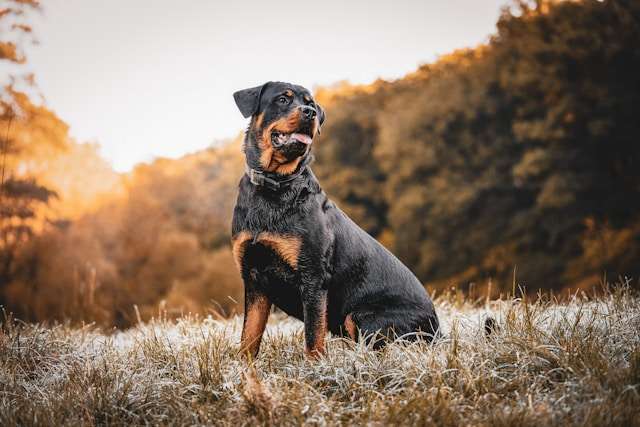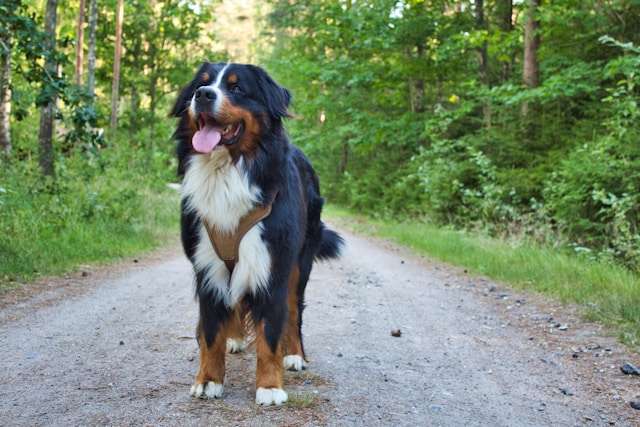Top 10 Grain-Free Dog Foods Reviewed for Healthy, Happy Dogs
Top 10 Grain-Free Dog Foods Reviewed for Healthy, Happy Dogs. When it comes to keeping my dog Savannah healthy, I’ve learned the food she eats makes a real difference.
Over the years, many dog owners have started looking into grain-free dog food, hoping to avoid common allergies and stomach issues.
With so many choices out there, finding the best for your dog’s breed or needs can feel overwhelming.
That’s why I put together this Top 10 Grain-Free Dog Foods Reviewed post. Whether you’re starting dog obedience training, want to boost your dog’s energy, or just want peace of mind, making the right choice matters.
Every review here is backed by research and hands-on experience, with insights I’ve gathered from K9Nutripick.com—a trusted resource for nutrition tips and honest dog food reviews. If you want your dog—like my Savannah—to thrive, you’re in the right place.
Table of Contents
Key Takeaways
After reviewing the Top 10 Grain-Free Dog Foods Reviewed, I noticed a few things that stood out and could save you time during your next trip to the pet aisle or online shop.
My goal is to help dog owners like us—especially those with dogs like my Savannah—feel confident in making food choices that support a happy, healthy life. Let’s break down the most important findings to guide your decision.
 Photo by MART PRODUCTION
Photo by MART PRODUCTION
Highlights from Reviewing Grain-Free Dog Foods
Switching to grain-free dog food can yield many benefits for various dog breeds and lifestyles. In my experience with Savannah and research on nutrition and dog food reviews, here’s what truly matters:
- Improved Digestion and Fewer Allergies: Many grain-free recipes rely on ingredients like sweet potatoes, peas, or lentils to avoid common allergens found in grains. This can lead to less itching, healthier skin, and firmer stools for sensitive pups.
- Better Energy Levels and Health: Dogs eating grain-free diets often show more consistent energy, which can support everything from dog obedience training to enjoying playtime. Natural proteins and fats power activity, while less filler means more nutrition per bite.
- Variety Suited for Every Size and Breed: The best grain-free dog foods cater to both large and small breeds, focusing on protein sources like chicken, salmon, or duck. This matters if you have a picky eater, a high-energy dog, or a breed prone to allergies. For more on breed-specific needs, reviews of dog food for specific breeds really come in handy.
How Dog Food Choices Impact Training and Daily Life
Food influences more than just your dog’s health; it also impacts your daily routine with training and bonding. For instance:
- Ease in Dog Obedience Training: A well-nourished dog is often more attentive and responsive during dog trainig or when using online dog training resources. Grain-free dog food may help reduce distractions from itching or discomfort.
- Helps Maintain a Healthy Weight: By offering meals free from extra carbs and fillers, you’re setting a baseline for keeping your dog at an ideal weight, which supports agility and long-term health.
- Better for Dogs with Dietary Sensitivities: Dogs like Savannah, who have reacted to traditional foods, often thrive once switching to a grain-free formula, thanks to ingredients found in today’s top-rated options. For a deeper look, you can check out guides on the benefits of grain-free dog food.
What Reviewers and Experts Say
Going through countless dog food reviews and advice from trusted sources, I found a few things come up again and again:
- Balanced Ingredients Matter More Than Trends: While grain-free formulas are popular, many experts recommend you check for a good mix of animal proteins, vegetables and essential nutrients.
- Listen to Your Dog: Not every dog needs grain-free dog food, but many—like my Savannah—benefit from careful recipe choices tailored to their system.
- Use Trusted Review Sources: Sites like Dog Food Advisor and K9Nutripick.com help you sift through the marketing noise and focus on what’s best for your breed.
These key takeaways reflect my experience and research into the top 10 products. Whether you’re shopping for a growing puppy, an active adult, or a senior with sensitivities, the right food supports every training session and every joyful moment with your dog.
For more tips and specific product advice, be sure to check out the rest of this guide and other resources on nutrition for popular dog breeds.
Why Choose Grain-Free Dog Food?
Choosing the right dog food felt tricky when I first noticed my dog Savannah’s itchy skin and upset stomach after meals packed with grains.
Like many pet parents, I wanted healthier options, fewer allergies, and more energy for our daily routines, from dog obedience training to long walks.
Grain-free dog food soon became a staple in our house—so why should you consider making this switch as part of your daily routine with your canine companion?
 Photo by Zen Chung
Photo by Zen Chung
Easing Allergies and Sensitive Stomachs
Many dog breeds, especially sensitive ones, show symptoms like scratching, licking, or inconsistent stools when exposed to common grains such as wheat, corn, or soy.
Swapping to grain-free dog food means you’re offering meals built on alternatives like sweet potatoes, lentils, and high-quality proteins.
Savannah’s recovery started this way, and it’s not uncommon—many owners see real change after the switch.
If you have a dog with frequent digestive issues, you might want to see recommendations for dog food for sensitive stomachs to help narrow your choices. I always look for advice from trusted review sites or chat with fellow dog owners to make sure what I pick suits my dog’s unique needs.
Supporting Active Lifestyles and Training
Dogs aren’t just furry couch potatoes—they have busy lives filled with play, walks, and training. Quality grain-free options load up on animal protein and healthy fats but skip the fillers, so your dog gets fuel that lasts.
Savannah’s energy levels spiked after making the switch, and her focus during dog trainig sessions improved as well.
From puppies learning new skills to seniors who need steady energy, the right food can support everything from agility to basic cues during online dog training.
Better Digestion and Firmer Stools
Digestive comfort often tops my priorities with dog food. Dogs, especially those with food sensitivities, can benefit from switching to options that include easily digestible carbs instead of grains. Firmer stools, less gas, and fewer messy cleanups are noticeable improvements.
If you’re looking for a deeper look at these benefits, this article on the benefits of grain-free dog food provides a good breakdown by nutrition experts.
Focused Nutrition for Different Breeds
No two dog breeds are the same. Some thrive on certain proteins, while others need a different balance of veggies or supplements. Grain-free options from the “Top 10 Grain-Free Dog Foods Reviewed” aim to cater to various needs, supporting puppies, active adults, or dogs who want to keep their coats shiny and skin itch-free.
For deeper tips on tailoring nutrition by breed, it’s helpful to review guides like the best dog food for British Bulldogs, which point out exactly what to look for based on your dog’s genetics and lifestyle.
Trust Built on Real Reviews and Experience
Choosing grain-free isn’t just about following trends. It comes from real experiences, seeing my own dog’s health change for the better, and reading dog food reviews from trusted sources. Each positive review feels like advice from a neighbor who’s faced the same choices.
Whether you’re tackling food sensitivities, want to sharpen dog obedience training, or simply want stronger, happier days with your pup, exploring the “Top 10 Grain-Free Dog Foods Reviewed” is a smart place to start.
Key Considerations When Selecting Grain-Free Dog Food
Selecting the right grain-free dog food takes more than grabbing the first bag off the shelf. I’ve learned through my personal journey with Savannah that you need to look beyond just trendy packaging or big promises.
Each dog is unique, and what works for one may not suit another. If you want your dog to benefit from the Top 10 Grain-Free Dog Foods Reviewed, keep these important factors in mind as you shop.
Know Your Dog’s Specific Needs
Every dog breed reacts differently to certain foods. My Savannah, for instance, struggled with itchy skin and stomach upset until I found a formula that matched her needs. Dogs of different ages, sizes, and breeds need different blends of nutrients.
- Puppies need more calorie-dense options with added nutrients for growth.
- Active breeds benefit from higher protein and fat content for lasting energy.
- Senior dogs may need formulas lower in calories, but higher in joint-supporting ingredients like glucosamine.
Always match your choice to your dog’s breed, age, size, and activity level. For specialized nutritional advice for different breeds, check out detailed guides and product reviews, like those found on K9Nutripick.com.
Ingredient Quality Over Buzzwords
Not every grain-free dog food is created equal. Some brands use low-quality fillers (even if grain-free) that offer little true benefit. Instead, check labels for:
- Real, named proteins as the first ingredient (like chicken, beef, salmon, or lamb)
- Whole veggies or fruits such as sweet potatoes, peas, carrots, blueberries
- Lack of artificial colors, flavors, or preservatives
- Natural sources of fiber and minerals
Savannah’s health improved when I prioritized clean ingredient lists over clever advertising. Read through authentic dog food reviews to get a sense of what others experience with specific formulas.
Understand Potential Health Risks
While grain-free diets can help with allergies and digestion, there are concerns about possible links to heart health, especially with formulas rich in peas, lentils, or potatoes instead of grains.
Make sure you’re aware of the latest research—resources like Are Grain-Free Diets Bad for Dogs? are helpful for staying updated.
If your dog has a heart condition, consult your vet before making a major switch. No single diet fits all, and sometimes a blend of grain-free and grain-inclusive meals is best.
Protein and Carb Balance
Grain-free labels shouldn’t trick us into thinking “all protein is better.” The healthiest formulas balance animal protein with digestible carbs and healthy fats. Dogs like Savannah thrive on foods with a mix of muscle meat, organ meat, eggs, and fish oil, along with plant-based carbs.
Look for:
- At least 20-30% high-quality animal protein
- Moderate healthy fats for skin and energy
- Easily digestible plant-based sources like sweet potatoes or chickpeas
A balanced recipe supports cognition, coat quality, and overall vitality, whether your dog is doing dog obedience training, running in the yard, or participating in online dog training.
Check for Complete and Balanced Nutrition
Not all dog foods meet the nutritional standards for “complete and balanced,” so always check for the AAFCO (Association of American Feed Control Officials) statement. This means the food provides all the nutrients your dog needs at their specific life stage—a key point covered in many dog food reviews.
Taste and Palatability
If your dog won’t eat it, the quality doesn’t matter. Some pickier eaters—like Savannah—may need food that smells and tastes great. Try small bags or samples first, and pay attention to your dog’s enthusiasm and stool quality over a week or two.
Transition Gradually and Watch for Changes
Changing foods too quickly can cause stomach upset. Introduce new grain-free dog food slowly, mixing a little with your old food and increasing the amount over a week. Track any digestive changes, shifts in energy, or skin reactions.
If your dog’s not thriving, don’t be afraid to try a different formula from the Top 10 Grain-Free Dog Foods Reviewed list.
For more information on choosing the right option for your pet’s unique needs, it can be helpful to explore in-depth guides like The Ultimate In-Depth Guide to Grain-Free Dog Food, which breaks down ingredient choices and potential risks in simple language.
 Photo by MART PRODUCTION
Photo by MART PRODUCTION
Being thorough now means your dog can live healthier, have better digestion, and enjoy every moment—whether at play, in training, or simply cuddling on the sofa. Always remember: pay attention to your own dog’s signals, just like I did with Savannah, and choose a food that truly fits their needs.
Top 10 Grain-Free Dog Foods Reviewed
If you’re looking for real experience and solid research in picking the best grain-free options, you’ve come to the right place.
These choices are shaped by thousands of hours observing my dog Savannah, comparing ingredient labels, and pouring over dog food reviews.
Each spotlighted product below fits a certain need, from tiny breeds to big athletes. You’ll find practical recommendations for weight, taste, and even sensitive stomachs—plus useful links for even deeper dives.
 Photo by MART PRODUCTION
Photo by MART PRODUCTION
1. Orijen Grain-Free Original: Best Overall Grain-Free
Orijen Grain-Free Original takes the crown as the best all-around choice. Packed with fresh, regionally sourced meats and a short ingredient list full of whole foods, it consistently wins high marks in dog food reviews.
There’s no wheat, corn, or artificial colors—just clean protein and plenty of nutrients.
Savannah’s digestion, energy, and even her shiny coat all improved when switching to Orijen. The protein sources are varied, so your dog gets all the amino acids needed for muscle, immune health, and energy. This food also stays palatable for even picky eaters.
Why it tops the list:
- 85% animal ingredients
- Uses fresh, raw animal protein
- Includes organ meats and cartilage for natural vitamins
- No fillers or by-products
2. Taste of the Wild Pacific Stream: Best for Sensitive Stomachs
Taste of the Wild Pacific Stream is designed for dogs with food sensitivities. It swaps traditional grains for sweet potatoes and peas, featuring salmon as the main protein.
Sensitive dogs benefit from its limited ingredients and careful balance of fiber and fat. Most pups, like my friend’s border collie with food allergies, showed less itching and firmer stools within weeks.
Best points:
- Salmon protein for easy digestion
- Grain-free carb sources like sweet potato
- Added probiotics to support gut health
3. Blue Buffalo Wilderness Large Breed: Best for Large Breeds
Large breed dogs have their own needs: steady growth, strong joints, and a protein boost without excess calories. Blue Buffalo Wilderness Large Breed meets these thanks to balanced nutrition, glucosamine for joints, and chondroitin for cartilage health.
If you’re caring for impressive canines the size of Savannah’s buddy Max, this one keeps bodies strong without packing on extra weight. To understand more about big dogs’ quirks and requirements, I recommend reading up on interesting facts about Akita dogs.
Key highlights:
- Chicken or salmon protein options
- Chondroitin and glucosamine for joint support
- Extra vitamins for heart and immune function
4. Wellness CORE Grain-Free Small Breed: Best for Small Breeds
Small dogs burn calories fast and often have picky appetites. Wellness CORE Grain-Free Small Breed delivers a nutrient-dense recipe with extra protein and healthy fats. The kibble is also sized just right for smaller mouths.
My neighbor’s Pomeranian, once disinterested at mealtime, devours this food. Plus, it includes antioxidants for extra wellness support.
- Protein from high-quality turkey
- DHA for healthy skin and coat
- Extra calcium for strong teeth and bones
5. Merrick Grain-Free Real Chicken + Sweet Potato: Best Budget Grain-Free
It’s tough to find a wallet-friendly grain-free formula that doesn’t skimp on quality. Merrick Grain-Free Real Chicken + Sweet Potato offers all the essentials—real deboned chicken, veggies, and zero artificial additives—without the higher price tag.
I often recommend this one to friends balancing budget and nutrition. Dogs get real value, not just filler ingredients.
- 60% protein and healthy fat, 40% produce and fiber
- No corn, wheat, soy, or gluten
- Omega-3s for coat health
6. ACANA Grasslands: Best for Active Dogs
For dogs with busy schedules or regular dog obedience training, ACANA Grasslands stands out. It features multiple protein sources like lamb, duck, eggs, and fish, providing the required calories and amino acids for endurance.
Savannah’s stamina improved when I switched to a high-protein, high-fat recipe like this. The mix of slow-releasing carbs also makes it ideal for both her playdays and training nights.
- Multi-meat recipe for full amino acid profile
- Rich in natural fats for energy
- No potatoes or tapioca
7. Stella & Chewy’s Freeze-Dried Raw Dinner Patties: Best Freeze-Dried Grain-Free
If you want raw nutrition with convenience, Stella & Chewy’s Freeze-Dried Raw Dinner Patties offer the perfect compromise. The freeze-drying process locks in nutrients, and all you do is add water for a tasty, meaty meal.
I use these as high-value rewards during online dog training with Savannah—they’re that tempting. The ingredient list sticks to the good stuff: meat, organs, bone, and organic fruits or veggies.
- Single-source and novel proteins
- No grains, gluten, or artificial additives
- Easy to store and feed on the go
8. Nutro Grain-Free Puppy: Best Grain-Free for Puppies
Puppies, like Savannah was years ago, need the right fuel for healthy growth. Nutro Grain-Free Puppy delivers chicken and lentils in the ideal ratios, so pups gain strong bones, glossy coats, and lots of playful energy.
This food gets top scores for digestibility and flavor. For specific advice on feeding little ones, check my full Puppy Nutrition Guide.
- DHA and calcium support brain and bone development
- No artificial colors or preservatives
- Highly digestible formula for gentle tummies
9. Natural Balance L.I.D. Grain-Free: Best Limited Ingredient Diet
For dogs with serious allergies, keeping it simple is key. Natural Balance L.I.D. (Limited Ingredient Diet) Grain-Free strips down to one animal protein and one main carb source. This reduces the chance of triggering sensitivities.
Many dog owners I know use Natural Balance during elimination diets to help pinpoint allergies without complicated ingredient lists.
- Single-source proteins like duck or salmon
- Minimal ingredients to ease digestion
- Suitable for long-term or allergy recovery
10. Blue Buffalo Homestyle Recipe Grain-Free: Best Grain-Free Wet Food
Sometimes, wet food is the answer—whether you’re mixing with kibble, feeding seniors, or catering to picky eaters. Blue Buffalo Homestyle Recipe Grain-Free brings real meat and broth with wholesome vegetables, all in a soft, easy-to-eat format.
I turn to this option for dogs recovering from illness or aging pets who need softer meals. It’s also a favorite as a treat topper for Savannah.
- Balanced blend of meats and garden veggies
- No wheat, corn, or soy
- Easy to digest and highly palatable
These choices from the Top 10 Grain-Free Dog Foods Reviewed fit busy families, sensitive stomachs, big and small dogs, and those looking for raw-style or wet options. Staying in tune with your dog’s needs, as I do with Savannah, makes all the difference—whether during play, dog trainig, or simply enjoying a meal together.
For more insights on specific dog breeds, scan detailed articles and tips curated on K9Nutripick.com, all carefully updated to guide your dog’s happy, healthy life.
Integrating Grain-Free Foods Into Training and Daily Life
Switching to grain-free dog food isn’t just a trend—it’s a meaningful way to support both your dog’s health and your routine together. I noticed real changes with my dog Savannah after making the switch. Her energy picked up, her focus during training sharpened, and even the simplest daily activities felt smoother. It’s easier to weave a nutritious grain-free choice into both training and your day-to-day than you might expect.
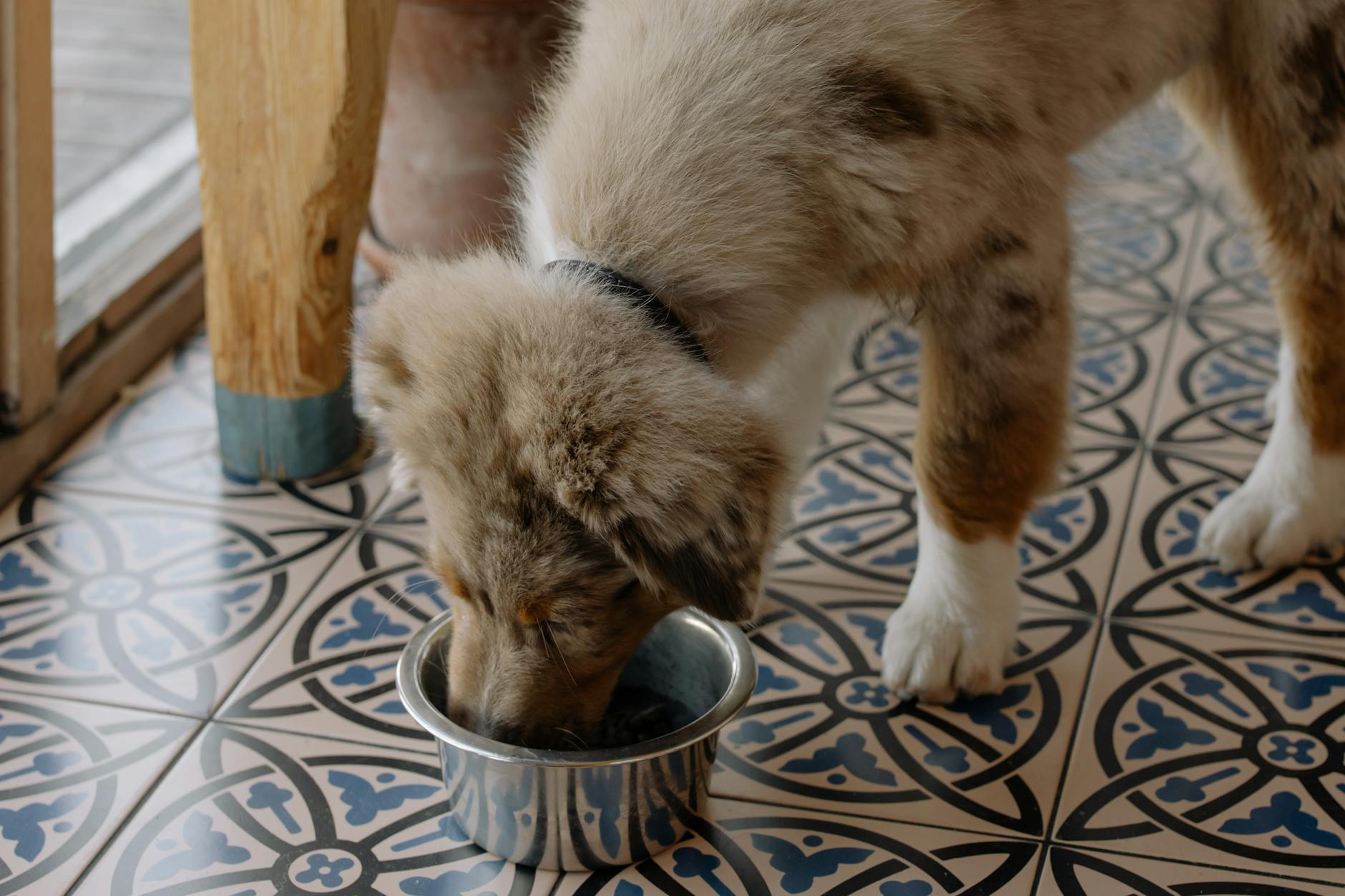 Photo by cottonbro studio
Photo by cottonbro studio
Using Grain-Free Foods as Motivation for Dog Obedience Training
High-value treats play a big part in quality dog obedience training. Grain-free kibbles or freeze-dried bites can easily become your training rewards, especially if your dog is sensitive to traditional treats. I often break down Savannah’s grain-free food into smaller pieces to use during learning sessions. This keeps her excited, focused, and ready to work.
Tips for making the most of grain-free food during training:
- Choose grain-free foods that list real meat as the first ingredient for tastiness.
- Use a portion of your dog’s meal as rewards—no need for extra calories or filler treats.
- For larger sessions or when teaching new skills, grain-free freeze-dried patties work wonders.
- Mix up treat flavors by rotating grain-free recipe varieties so your dog stays interested.
If you want to see how breed differences impact training styles, check out these Boxers dog traits for insights on matching food and reward to your dog’s temperament.
Incorporating Grain-Free Food into Daily Routines
Grain-free dog food isn’t only for set mealtimes. I saw that weaving it into everyday activities made Savannah’s day more interactive and fun. Scatter feeding and puzzle toys are perfect for serving grain-free kibble, especially on rainy days or when you need to keep your dog busy for a while.
Simple ideas to fit grain-free food into your routine:
- Hide kibbles around the house or yard for mental stimulation and healthy foraging.
- Stuff interactive toys with grain-free wet food or soaked kibble for a satisfying challenge.
- Use meal prep time as bonding time—mix small amounts of grain-free wet food with kibble for special meals or “training dinners.”
Regularly switching up presentations and feeding games helps keep any dog breed—whether a spry puppy or a senior—engaged and eager to eat.
Supporting Active Lifestyles and Mental Stimulation
The best part about the Top 10 Grain-Free Dog Foods Reviewed is how well they support active routines. When Savannah switched to a balanced grain-free formula, her stamina and focus improved during long walks, agility exercises, and daily backyard games.
If your dog is involved in advanced activities or online dog training sessions, proper fuel makes a clear difference in motivation and learning speed.
Ways to tap into your dog’s energy using grain-free food:
- Combine grain-free meals with scheduled training or games for an energy boost before activity.
- Use a portion of the meal as “training currency” during online dog training courses.
- Try mixing textures—like freeze-dried grain-free bites and standard kibble—for variety that perks up even the pickiest dogs.
If you’re curious about how nutrition connects with unique breed needs, you might find this Comprehensive Guide to Boston Terriers helpful for adjusting meal strategies for small, active dogs.
Monitoring and Adjusting Based on Your Dog’s Response
Every dog responds a little differently to diet changes. Savannah became more attentive and had better coat quality, but I always watch for any changes after introducing new foods. Monitor for:
- Increased motivation or focus during obedience and play
- Healthy, firm stools without signs of upset
- No itching or excessive licking
- Steady energy all day
Adjust ingredient variety if your dog’s interest fades or experiment with different grain-free formulas from the Top 10 Grain-Free Dog Foods Reviewed for extra palatability.
Paying attention to small details in your dog’s routine helps you catch and celebrate positive changes, making daily life together even smoother. Integrating grain-free dog food is not just about meals but about supporting the special bond you share—one training session, walk, and adventure at a time.
Frequently Asked Questions About Grain-Free Dog Food
Deciding to try grain-free food for your dog often leads to a lot of questions. I’ve been there myself with Savannah, so I know how overwhelming it can feel.
Whether you’re concerned about ingredient safety, the real health impacts, or how grain-free diets fit into dog obedience training and daily life, the answers below should help ease your concerns.
These are the most common questions dog owners ask after reading my Top 10 Grain-Free Dog Foods Reviewed.
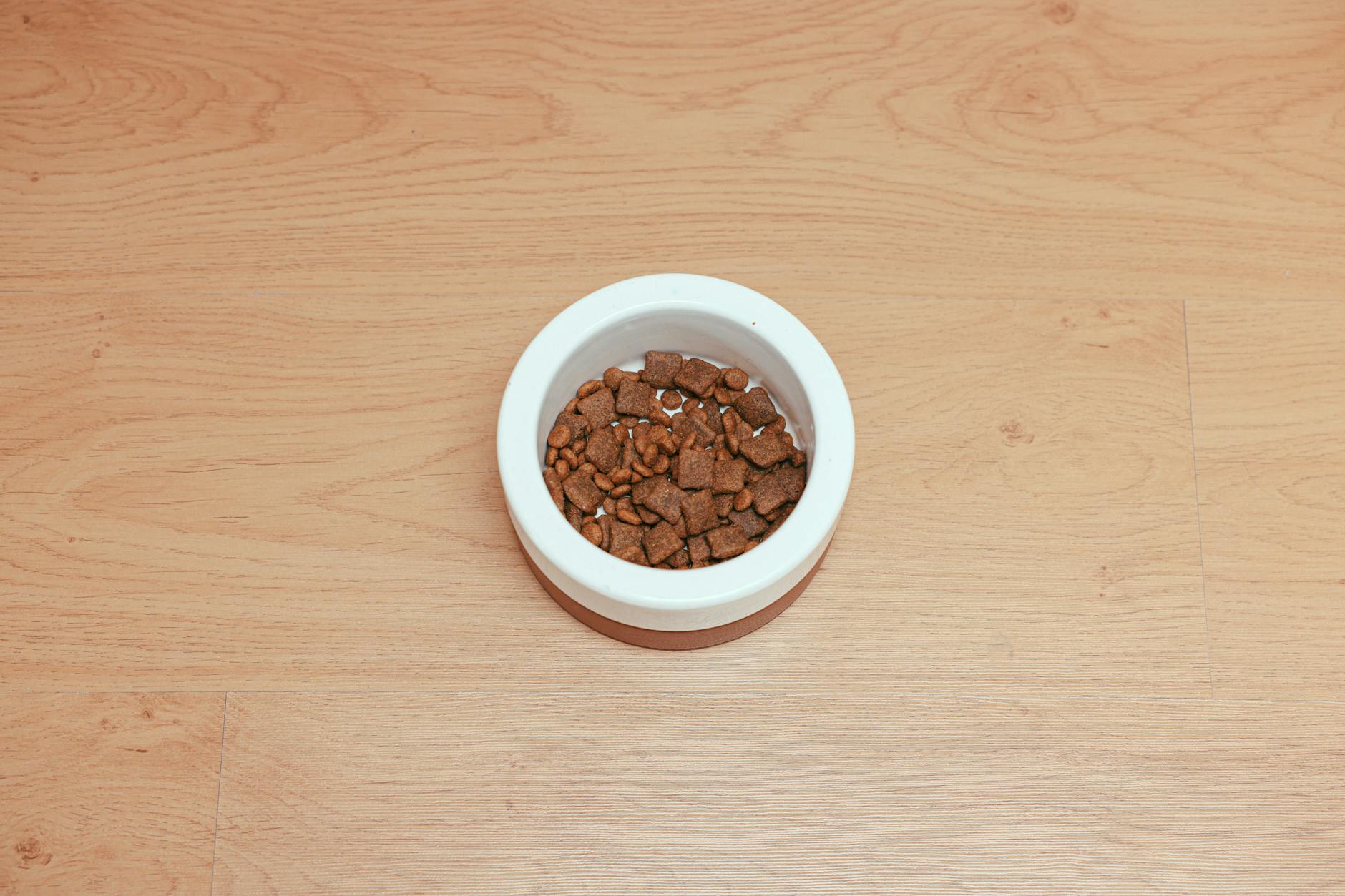 Photo by Cup of Couple
Photo by Cup of Couple
Is Grain-Free Dog Food Really Better for All Dogs?
Grain-free dog food can benefit dogs who struggle with allergies, itchy skin, or upset stomachs. It helped Savannah after repeated reactions to traditional kibble. However, not all dog breeds require grain-free diets.
Some dogs digest grains just fine, and certain breeds have no trouble at all. If your dog has a confirmed grain allergy or sensitivity, grain-free is a strong option. Otherwise, focus on ingredient quality and your dog’s history.
For an expert opinion, check out What you need to know about grain-free dog food, which reviews common questions about benefits and safety.
Does Grain-Free Dog Food Cause Heart Problems in Dogs?
There has been concern about a possible link between grain-free diets, especially those high in peas and lentils, and canine heart disease called DCM (dilated cardiomyopathy). The FDA and scientists are still studying this, and there isn’t a firm answer yet.
It’s smart to choose products from the Top 10 Grain-Free Dog Foods Reviewed that meet the standards for balanced nutrition and consult your vet if your dog has pre-existing heart issues.
Avoid recipes that rely too heavily on legumes as the main ingredients. For more details on this, you may want to review this straightforward FAQ on grain-free diets and DCM.
How Do I Know If My Dog Needs a Grain-Free Diet?
Watch for signs like frequent scratching, licking paws, ear infections, and loose stools. These symptoms might suggest a grain or food allergy.
Before switching, check with your veterinarian for advice. In Savannah’s case, my vet recommended a trial with new foods, and grain-free made a difference.
If your dog thrives on their current food with no digestive or skin issues, grain-free may not be necessary. If you’re curious about breed-specific needs, resources like the complete guide for British Bulldogs can be helpful.
Can I Use Grain-Free Food During Dog Obedience Training?
Absolutely. Grain-free kibble or freeze-dried options can be broken into small, high-reward treats perfect for training. For Savannah, I often use pieces from her regular meals during both in-person and online dog training. Just make sure the treats are tasty and nutritious to keep your dog focused and excited.
Are There Any Risks With Grain-Free Diets?
The risks around grain-free feeding mostly revolve around long-term heart health and the overuse of certain ingredients, like peas and lentils. Always pick formulas from trusted brands, stick with the Top 10 Grain-Free Dog Foods Reviewed, and check for an AAFCO statement on the label. Mix in dietary variety when possible, and speak to your vet about your choices.
For a balanced review of pros and cons, you can read a 2025 dog food review on best dry options or learn about healthy foods with grain if you ever decide to switch back.
How Do I Transition My Dog to Grain-Free Dog Food?
Switch slowly over 7 to 10 days:
- Start by mixing about 25% new food with 75% old food.
- Gradually increase the new food each day while decreasing the old food.
- Watch your dog for signs of stomach upset, like loose stools or lethargy.
- If your dog shows discomfort, slow the pace even more.
Savannah’s switch went smoothly once I took this route, and it kept her stomach calm during the change.
What Ingredients Should I Look For in Grain-Free Dog Foods?
Look for:
- Real, named meats as the first ingredient
- Whole veggies and fruits like sweet potatoes, peas, or carrots
- Natural sources of healthy fats
- No unnecessary fillers, artificial colors, or flavors
Scanning dog food reviews, I noticed these patterns in the highest-rated options. Dog breeds with sensitivities especially benefit when formulas focus on digestibility and targeted nutrition.
Can Puppies and Senior Dogs Eat Grain-Free Dog Food?
Yes, but with care. Puppies and seniors have unique needs. Puppy-specific grain-free options are tailored for development, while senior formulas are balanced for joint health and lower cards.
Always check the label for age-appropriate formulas. For more puppy-specific feeding tips, this Puppy Nutrition Guide can help.
Can I Mix Grain-Free Wet and Dry Foods?
Mixing wet and dry grain-free food is a common approach, especially for picky eaters or dogs who need more moisture.
Savannah often gets a little wet food to boost flavor and hydration. As long as both are complete and balanced, mixing can add variety and enjoyment.
If you ever want more details about safe mixing, read expert dog food reviews for insights on what other owners do and which combos work well.
Is Grain-Free Food More Expensive Than Regular Dog Food?
Usually, grain-free dog food comes with a slightly higher price tag, but not all brands are expensive. Value options like those found on the Top 10 Grain-Free Dog Foods Reviewed list still offer strong nutrition at a reasonable price. For tight budgets, look at ingredient lists and serving sizes to be sure you’re getting the best deal for quality nutrition.
Understanding answers to questions like these helped me pick the right formula for Savannah and gave me confidence at the store.
Taking the time to get informed makes your dog’s meal times healthier and more rewarding, whether you’re focused on everyday wellness or strengthening your bond through dog trainig and play.
Frequently Asked Questions About Grain-Free Dog Food
When I switched Savannah to a grain-free diet, I had so many questions myself. Over time, I heard the same worries from other dog owners, whether at training classes or chatting online. Here I’ll answer the most common questions to give you clear, helpful guidance you can trust after reading the Top 10 Grain-Free Dog Foods Reviewed.
Is Grain-Free Dog Food Safe for Every Dog?
Grain-free dog food can work wonders for dogs like Savannah who deal with allergies or tummy troubles. Still, not every dog actually needs to avoid grains.
Many dog breeds do fine with regular food unless there’s a confirmed allergy or sensitivity. Always base the choice on your dog’s own reactions, not just labels or trends.
If you want to find out more about how these diets could pose risks for some pets, you’ll appreciate reading Are Grain-Free Diets Bad for Dogs?, which explains how certain ingredients might affect a dog’s heart health.
What Ingredients Should I Look for (or Avoid) in Grain-Free Dog Food?
Read ingredient lists closely. Choose foods with real, clearly-named meats first, like chicken or salmon. Whole veggies and fruits (sweet potatoes, carrots, peas) are good, too. Avoid foods stuffed with artificial colors, flavors, or long lists of fillers.
If you’re curious about what makes a strong or weak ingredient list, check A Guide to Dog Food Ingredients and Reading Labels for practical tips on decoding what’s in your dog’s bowl.
Does Grain-Free Food Affect Dog Obedience Training?
Yes, it can! When Savannah eats quality grain-free food, her energy and focus go up, making dog obedience training smoother.
Training sessions feel more fun because she isn’t distracted by itchy skin or stomach upsets. If you’re searching for creative tips on reinforcing training routines, the Top 10 Dog Training Tips guide covers rewards and consistency.
For some dogs, using grain-free kibble or freeze-dried treats as high-reward motivators can really boost dog trainig results.
Can Puppies or Senior Dogs Eat Grain-Free Food?
Absolutely, but stick to age-appropriate recipes. Puppies need more protein, fat, and key nutrients for growth, while seniors need balanced formulas for joints, digestion, and lower energy. You’ll spot formulas in the Top 10 Grain-Free Dog Foods Reviewed that are tuned to both life stages.
Anyone raising a puppy should check the dedicated Puppy Nutrition Guide for smart feeding advice.
Is There a Right Way to Switch My Dog to Grain-Free Food?
Change slowly over a week. Start with 25% new food, 75% old, and gradually adjust the ratio each day. Savannah’s transition went smoothly with a measured approach—moving too quickly leads to an upset stomach. Always pay attention to your dog’s stools and appetite as you switch.
Are Grain-Free Diets Linked to Heart Problems?
Recent research links some grain-free foods, especially those heavy in legumes, to a heart issue called DCM. Vets and the FDA are still learning more about this.
Stick with brands and products that meet complete nutrition standards and ask your vet if your dog is higher risk. You can always balance grain-free meals with traditional foods as needed.
Can I Mix Grain-Free Kibble and Wet Food?
Mixing is common and works well, especially for picky eaters or when you want to boost hydration. Just make sure both foods offer balanced nutrition. Mixing flavors or textures makes mealtimes more exciting for Savannah and gives her a bit more variety.
Is Grain-Free Dog Food More Expensive?
In general, grain-free food costs a bit more, but brands on the Top 10 Grain-Free Dog Foods Reviewed list offer choices in all price ranges. Comparing ingredient quality and serving sizes helps you find nutrition that fits your budget.
How Do I Use Grain-Free Foods for Online Dog Training?
Grain-free kibbles or treats can be perfect “high value” rewards for online dog training sessions. I always bring Savannah’s favorites for video coaching classes and notice her enthusiasm double when she’s working for food she truly enjoys.
What Signs Show My Dog Is Doing Well (or Not) on Grain-Free Food?
Watch for less itching, clear skin, firm stools, steady weight, and bright energy. If your dog’s coat gets dull, they lose weight, or have low energy, review your food choices and talk with your vet. No one-size-fits-all answer exists—follow your dog’s signals.
For more practical advice on combining nutrition, training, and daily care, K9Nutripick offers trusted reviews and breed-specific tips, like those in best dog food for British Bulldogs. Staying curious and reading up helps you make the best choice for your four-legged family.
Conclusion
Choosing the right food shapes your dog’s health—and life with you. The Top 10 Grain-Free Dog Foods Reviewed taught me that ingredient quality, your dog’s breed, and practical results matter more than any marketing trend.
When my own Savannah found relief from her allergies, I learned firsthand how a thoughtful grain-free choice can create big changes in energy, coat health, and even success with dog obedience training.
If you found these reviews helpful, consider reading trusted dog food reviews for up-to-date details and honest owner experiences. For anyone looking to dig deeper, K9Nutripick.com is packed with advice on everything from nutrition and online dog training to guides on caring for different dog breeds.
Your dog is unique. Paying attention to what works for them—just as I did for Savannah—builds trust and keeps tails wagging. Thanks for reading and supporting your pup’s best life. What changes have you noticed in your dog since switching foods? Share your story and help others make informed choices.

